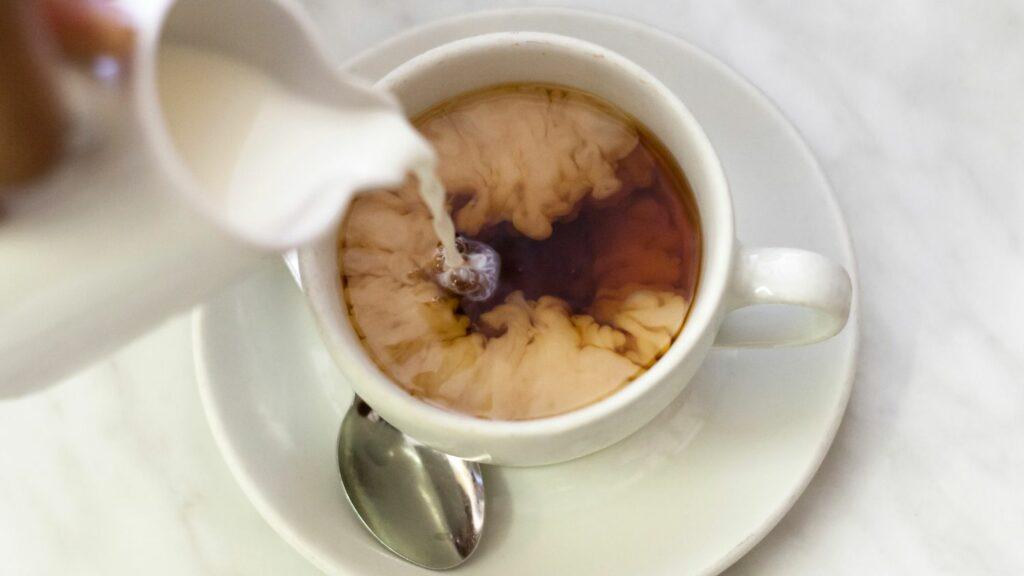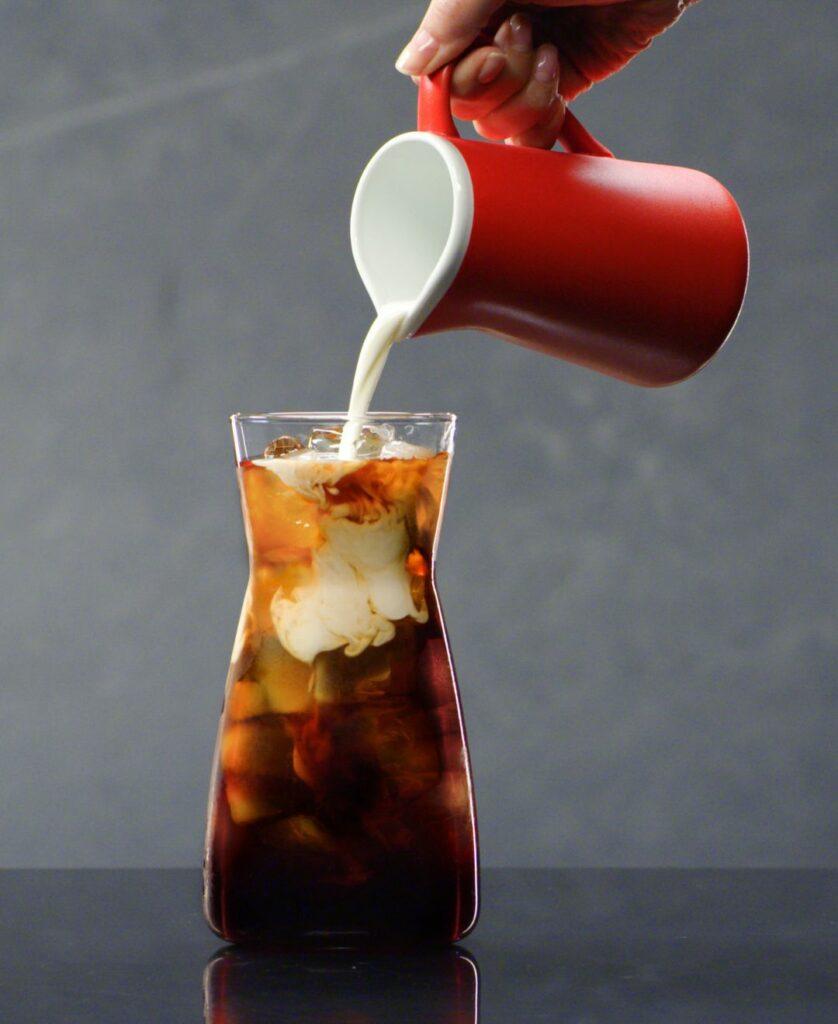People love sweet coffee.
Over 2.25 billion cups of coffee are consumed worldwide every day. In America, 87% consider themselves somewhat or “full-on coffee-obsessed,” with roughly 3 in 4 drinking coffee daily (73%) and 93% having at least one cup a week.
While many make it a part of their morning ritual for that much-needed caffeine boost, the number one driver for coffee lovers is that they simply love the taste (83%).
Yet, for a vast majority, this doesn’t mean drinking it black. On average, Americans add three packets of sugar or sweetener to their coffee, and an overwhelming majority (77%) of people choose to add milk or creamer (dairy and plant-based) to their coffee.
In 2022, the global coffee creamer market was estimated at USD 4.46 billion. With it expected to grow at a compound annual growth rate (CAGR) of 5.6% until 2030, it appears Americans aren’t the only ones who enjoy a sweet and creamy cup of coffee.

Still, with the increased attention being paid to health and wellness, a growing number of consumers are thinking twice about what they are putting into their morning brew.
Wanting to provide a healthier but equally enjoyable coffee-drinking experience, developers are eager to offer better-for-you (BFY) creamer options with less sugar and lower calories.
However, creating satisfying BFY stir-ins isn’t without its challenges.
Understanding Better-For-You (BFY) Creamers
Whether it’s a rich espresso or frothy latte, better-For-You (BFY) creamers have changed the way coffee lovers enhance their favorite brews. They’re designed to provide consumers with a healthier alternative to traditional sweeteners. Some of their key characteristics include:
- Low Or Reduced Calories
- Low Sugar Content
- Artificial Sweeteners
- Plant-Based Ingredients
The importance of BFY creamers lies in their ability to cater to the increasing demand for health-conscious choices without sacrificing the delightful coffee tastes that people love.
For example, many coffee roasters are now offering BFY creamers to complement their premium coffee beans, ensuring that the final cup, whether it’s a cappuccino or a caramel macchiato, meets the high standards of health-conscious consumers.
Challenges In Developing BFY Creamers
Developing BFY creamers comes with its own set of challenges including:
- Balancing sweetness and mouthfeel
- Issues with alternative sweeteners like stevia and monkfruit
- Maintaining creamy texture in low-fat options
The primary issue with alternative sweeteners, such as stevia and monkfruit, is that while they provide the necessary sweetness, they also introduce an often unwanted aftertaste that detracts from the coffee’s original flavor.
Maintaining a creamy texture in low-fat creamer options is another significant challenge.
Traditional creamers often rely on fat to create the rich, indulgent mouthfeel that enhances the overall coffee-drinking experience. Reducing fat content leads to a thinner, less satisfying texture.
To overcome these obstacles, developers need innovative solutions that mimic the fullness and creaminess of higher-fat options while keeping the calorie count low. That’s why it’s important to create BFY creamers that meet health standards and satisfy the tastes of coffee lovers.
Low-Sugar Creamers For Sweet Coffee
Typically, when a developer looks to reduce the amount of sugar (sucrose) in a coffee creamer, they’d still like to maintain a similar level of sweetness. To achieve this, they usually opt for an alternative sweetener like stevia or monkfruit.
Though this may reduce the amount of actual sugar in a product, using these alternatives comes with some drawbacks.

The most common are unwanted off-notes and/or a loss of mouthfeel.
Alternative sweeteners may maintain your desired sweetness level, but they can often create a lingering sweetness you wouldn’t get from sucrose. Additionally, these sweeteners might produce metallic off-notes that can distract or take away from the enjoyment of one’s morning cup of sweet coffee.
Switching from regular sugar can also negatively impact another crucial part of the creamer experience: mouthfeel.
Ingredients such as stevia and monkfruit generate a more intense perception of sweetness, so you naturally need to use less of them.
As a result, you end up lowering the Brix level (°Bx), a measurement of the dissolved solids in a liquid commonly used to measure sugar content.
In other words, a higher concentration of sugar can give you that fuller mouth coating and mouthfeel you expect. In contrast, a product with lower sugar or that uses sweeteners will have fewer solids, making it seem thinner or even watery.
This is why application scientists always stress to formulators that you can’t just take something without putting something back in. The formula must always add up to 100%
Reducing calories through fat reduction often introduces similar issues.
Low-Calorie Creamers In Brewed Coffee
The quickest way to create a lower-calorie creamer option is through fat reduction. More specifically, when we are talking about creamers, that usually means removing the actual cream.

For dairy creamers, this is done by replacing a portion of or all of the cream with another dairy product containing less milk fat, like whole, 2%, or skim milk.
Plant-based creamers can achieve a similar result by adjusting the amount of fats used in their formulation.
Either way, while this may result in a calorie-conscious creamer, the indulgent, smooth, and creamy mouthfeel consumers crave could be lost.
In both fat and sugar reduction, the challenge for developers becomes taking away “the bad” without losing any of the good.
Flavor can help you unlock this.
A Great Flavor Profile Is the Key To Success
It’s probably no surprise that the flavored creamers segment held the largest revenue share of 63.6% in 2022.
But while adding decadent profiles can help excite customers, our flavors can do that and so much more.
Edlong is uniquely suited because we understand the challenges; we have many flavors in the line that can work with and address the issues facing BFY creamers.
For example, certain sweet flavors, like those in our new Sweet Success™ line, profile can use their sweet aromatics to give people the perception of sweetness even if there isn’t sugar in that specific flavor. Some of our flavors can also increase the perception of sweetness and odor intensity both in your nose and mouth.
Using this technique helps you reduce your sugar and your need for alternatives.

When off-notes from sweeteners become an issue, our suite of masking solutions and characterizing profiles are there to help bring back the balance you’re looking for in your low-sugar creamer options.
Regarding mouthfeel, our scientists’ exclusive focus on dairy and dairy-type flavors helps them intricately understand all of the nuances that go into not only mouthfeel but texture as a whole.
We have a number of flavors that can build back the creamy and fatty mouthfeel characteristic of sweet coffee creamer.
Moreover, with the rising popularity of cold brew, with or without sweet cream, and ready-to-drink (RTD) coffee beverages, it’s essential to choose a solution that can withstand heat or cold.
That’s why we validate all our flavors in sensory analysis to ensure they’ll perform in your specific application.
Whether dairy or plant-based, let Edlong help you create a delicious, better-for-you coffee creamer consumers will actually want to get out of bed for.
About the Author: Julie Drainville, Sensory Manager
Julie Drainville leads all sensory functions for Edlong globally, maintaining a trained employee panel for sensory testing, and also collaborating with applications scientists and customers to run testing to meet project needs. Julie has an extensive background in food science including over 15 years in the sensory field, a degree from Purdue University in Foods, Nutrition and Business/Dietetics, a Master of Science in Nutrition Education from Rosalind Franklin University, and completion of the UC Davis Applied Sensory and Consumer Science Certificate Program.
Topics: Better For YouBeverages
Resource Type: Article
Resource Region: EULATAMUS
